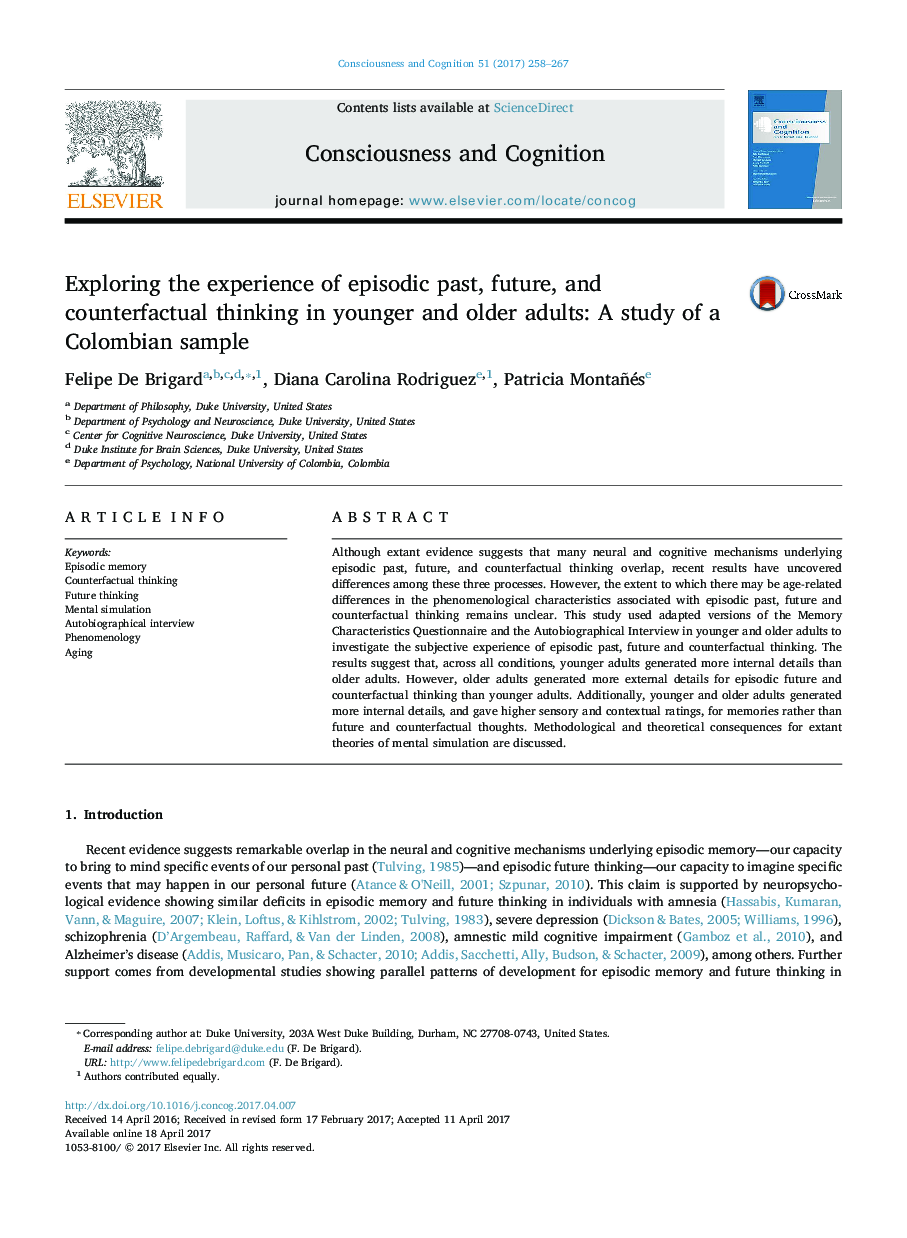| Article ID | Journal | Published Year | Pages | File Type |
|---|---|---|---|---|
| 5041851 | Consciousness and Cognition | 2017 | 10 Pages |
â¢Memory characteristics questionnaires and autobiographical interview were used.â¢Study compares experience of past, future and counterfactual thoughts in young and old.â¢Young generated more internal details; old generated more external details for future, counterfactuals.â¢Both generated more internal details and sensory ratings for memories vs future, counterfactuals.â¢Old gave higher ratings across all measures than young.
Although extant evidence suggests that many neural and cognitive mechanisms underlying episodic past, future, and counterfactual thinking overlap, recent results have uncovered differences among these three processes. However, the extent to which there may be age-related differences in the phenomenological characteristics associated with episodic past, future and counterfactual thinking remains unclear. This study used adapted versions of the Memory Characteristics Questionnaire and the Autobiographical Interview in younger and older adults to investigate the subjective experience of episodic past, future and counterfactual thinking. The results suggest that, across all conditions, younger adults generated more internal details than older adults. However, older adults generated more external details for episodic future and counterfactual thinking than younger adults. Additionally, younger and older adults generated more internal details, and gave higher sensory and contextual ratings, for memories rather than future and counterfactual thoughts. Methodological and theoretical consequences for extant theories of mental simulation are discussed.
